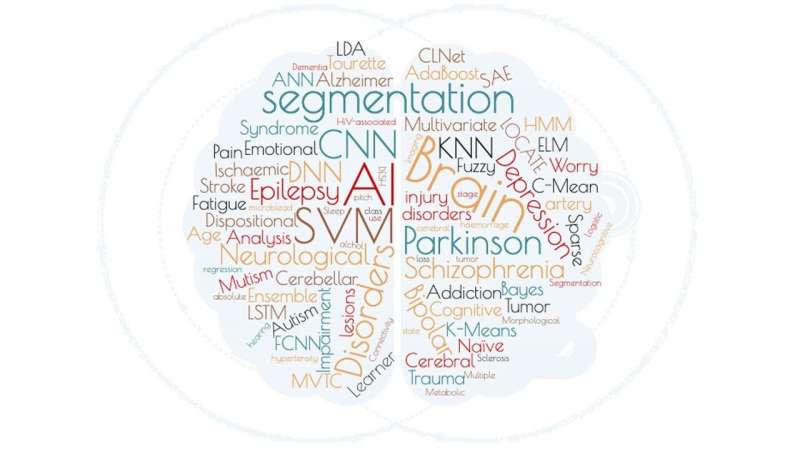Assessing state of the art in AI for brain disease treatment

Artificial intelligence is lauded for its ability to solve problems humans cannot, thanks to novel computing architectures that process large amounts of complex data quickly. As a result, AI methods, such as machine learning, computer vision, and neural networks, are applied to some of the most difficult problems in science and society.
One tough problem is the diagnosis, surgical treatment, and monitoring of brain diseases. The range of AI technologies available for dealing with brain disease is growing fast, and exciting new methods are being applied to brain problems as computer scientists gain a deeper understanding of the capabilities of advanced algorithms.
In a paper published this week in APL Bioengineering, by AIP Publishing, Italian researchers conducted a systematic literature review to understand the state of the art in the use of AI for brain disease. Their search yielded 2,696 results, and they narrowed their focus to the top 154 most cited papers and took a closer look.
Their qualitative review sheds light on the most interesting corners of AI development. For example, a generative adversarial network was used to synthetically create an aged brain in order to see how disease advances over time.
"The use of artificial intelligence techniques is gradually bringing efficient theoretical solutions to a large number of real-world clinical problems related to the brain," author Alice Segato said. "Especially in recent years, thanks to the accumulation of relevant data and the development of increasingly effective algorithms, it has been possible to significantly increase the understanding of complex brain mechanisms."
The authors' analysis covers eight paradigms of brain care, examining AI methods used to process information about structure and connectivity characteristics of the brain and in assessing surgical candidacy, identifying problem areas, predicting disease trajectory, and for intraoperative assistance. Image data used to study brain disease, including 3-D data, such as magnetic resonance imaging, diffusion tensor imaging, positron emission tomography, and computed tomography imaging, can be analyzed using computer vision AI techniques.
But the authors urge caution, noting the importance of "explainable algorithms" with paths to solutions that are clearly delineated, not a "black box"—the term for AI that reaches an accurate solution but relies on inner workings that are little understood or invisible.
"If humans are to accept algorithmic prescriptions or diagnosis, they need to trust them," Segato said. "Researchers' efforts are leading to the creation of increasingly sophisticated and interpretable algorithms, which could favor a more intensive use of 'intelligent' technologies in practical clinical contexts."
More information: Alice Segato et al, Artificial intelligence for brain diseases: A systematic review, APL Bioengineering (2020). DOI: 10.1063/5.0011697



















